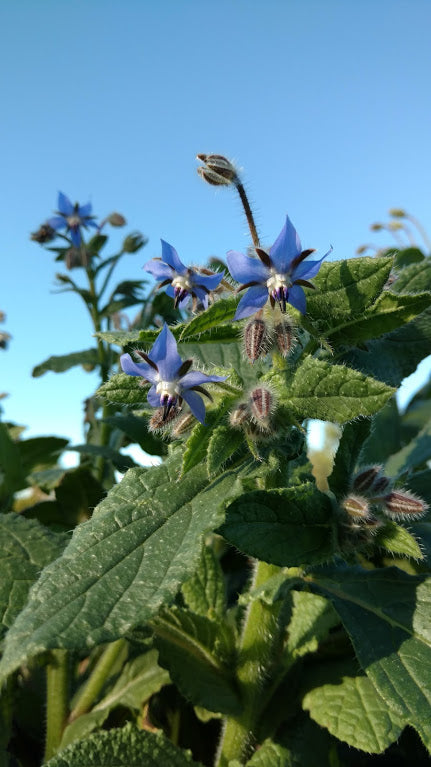
11 Uses for Borage
I LOVE BORAGE! Yes, I am that excited to share this info with you. Borage is an old plant that has a number of medicinal properties and culinary uses. It...
Mary Smith |
Welcome to our store Learn more

I LOVE BORAGE! Yes, I am that excited to share this info with you. Borage is an old plant that has a number of medicinal properties and culinary uses. It...
Mary Smith |
Our latest e-newsletter is PACKED with info on Herbs, Herbal Remedies and Special Offers. Check it out! Mary's Heirloom Seeds Quick Links Echinacea Coconut Coir Pellets POPPY Seed Starting SUPPLIESOrganic...
Mary Smith |
Making your own herbal home remedies is easy. Herbal tea is a great start but Tinctures can a much stronger alternative. The cost to purchase 2 ounces in the store...
Mary Smith |
There's been quite a buzzzzz over our latest additions here at Mary's Heirloom Seeds. Last week we added Dill Bouquet, Wild Strawberry and Indian Strawberry. Indian Strawberry is considered...
Mary Smith |
Making your own herbal home remedies is easy. Herbal tea is a great start but Tinctures can be a much stronger alternative. The cost to purchase 2 ounces in the...
Mary Smith |
Another recipe for alternative "medicine." For my allergy tincture I use a special blend from Mary's Heirloom Seeds DIY Tincture Kit. It is an herbal combination which can be...
Mary Smith |
Making your own herbal home remedies is easy. Herbal tea is a great start but Tinctures can a much stronger alternative. The cost to purchase 2 ounces in the store...
Mary Smith |
It's another beautiful day here. The air is cool and crisp. The sun is shining and life is good! Today I'm talking Tinctures! In our house, we use tinctures first...
Mary Smith |
Making your own herbal home remedies is easy. Herbal tea is a great start but Tinctures can a much stronger alternative. The cost to purchase 2 ounces in the store...
Mary Smith |

YARROW, A great herb for Women's Health In case you missed the very first post in our Herbal Series, check out Boost Your Health with Organic Herbs There are...
Mary Smith |
Have you ever considered the benefits of food growing in your own backyard? Cayenne Pepper has many health benefits but it can be difficult to consume in larger amounts due...
Mary Smith |